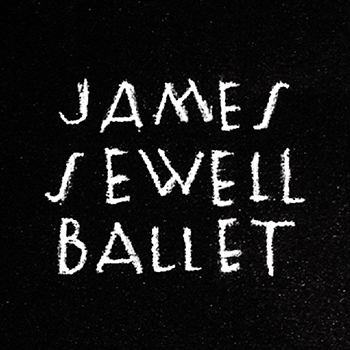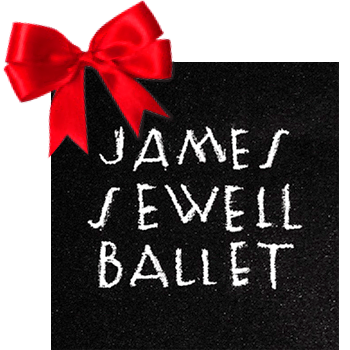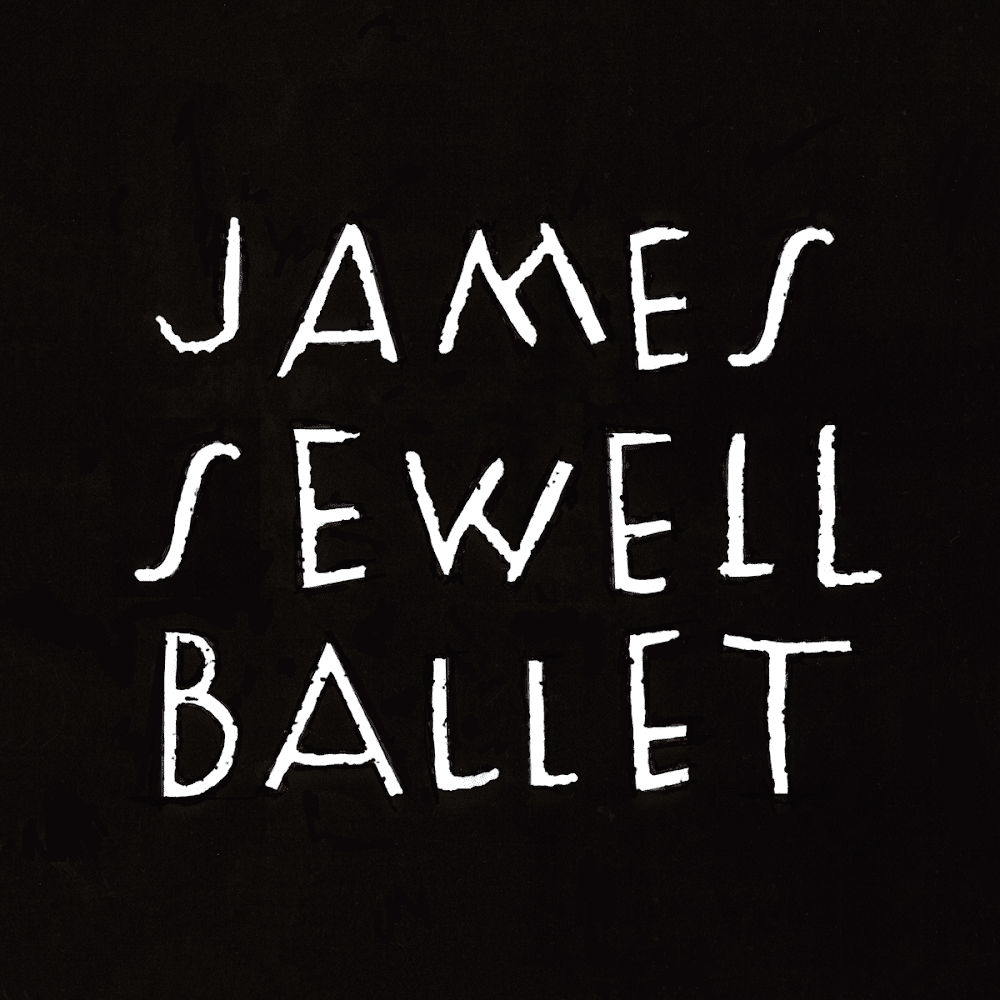Company
The Company
James Sewell Ballet was founded in New York City by James Sewell and Sally Rousse and brought to Minnesota in 1993. Combining their expertise, vision and chutzpah, they envisioned a close-knit company of dance artists willing to both challenge their physical limits and expand their notions about ballet. Over three decades later, critically acclaimed JSB performances move and delight audiences across the country. The embodiment of the original vision is a professional company of dancers performing innovative work that explores the technical boundaries of ballet.
Our History
James Sewell Ballet was the dream of Sally Rousse and James Sewell, two innovators who together re-imagined what a contemporary ballet company could look like: a chamber dance troupe that blends the elegance of classical ballet, the freedom of modern dance, and the can-do spirit of vaudeville.
In New York City in 1990, where there were over 400 dance companies below 14th Street alone, Rousse and Sewell were determined to grow their dream into reality. On roller skates carrying a bucket of wheat paste, Sally plastered posters all over Manhattan. James schlepped a portable dance floor to an elementary school in Queens for a Lincoln Center Young Audiences performance.
The young JSB was a pick-up company with a roster of performers that changed with each project. Dancers from American Ballet Theater and the companies of Lar Lubovich and Murray Louis and others were drawn to working with JSB. Free rehearsal and performance spaces at the David Howard Dance Center and the LaGuardia High School for the Performing Arts helped support James’s and Sally’s vision.
To survive, JSB had to distinguish itself. James’s background in music, magic, gymnastics and his use of choreography to explore contemporary issues like male and female psyches, immigration, and other difficult topics were unusual in the world of ballet. With Sally as his creative muse, James told stories from her life and other sources and translated them into relevant, modern-day ballets.
The founders’ roles expanded to meet the growing needs of the company, with Sally fundraising, rehearsing, and booking the company, and James creating repertoire, including signature works like “In Counterpoint” and “Loves Remembered.” They toured as a company of six throughout New England and New York State.
Minnesota Move
In 1993, JSB moved from New York to James’s native Minnesota and became a full-time organization. The Twin Cities was a dance environment in flux. An attempted merger between the Minnesota Dance Theater and the Pacific Northwest Ballet had left the local dance scene without a local professional ballet presence. Some funders were apprehensive about investing in a start-up ballet company. Though the New York Times wrote that JSB was “a polished gem of a chamber dance troupe… perfect creative instruments…this is the company to see” the company still had to prove itself in the Minnesota arts community.
Patrons Elinor Bell, Kathie and Bob Goodale, and General Mills stepped forward to support JSB. Theater and Dance critic Mike Steele wrote encouraging columns in the Star Tribune. Minnesota Dance Theater’s Loyce Houlton eagerly brought James and Sally in to work with her school and hired JSB to star in her Nutcracker production.
JSB acquired its own studio space at the Minnesota Opera Center, engaged the O’Shaughnessy Auditorium, hired Kevin Jones as lighting designer/technical director, and contracted four full-time dancers, becoming one of the first dance companies in the region to offer health benefits and salaries. James and Sally learned how to become leaders when they were often no older than the dancers they directed.
When in New York, Sally had been wearing the various hats that make a dance company possible — accountant, executive director, ballet mistress, president of the board, marketing director, and costume coordinator—as well as dancing. In Minneapolis, the savvy JSB board hired an administrative staff—Sara Oxton and then Gary Peterson— which freed Sally, James, and the company to advance to the next level artistically and organizationally.
Twin Cities Collaborations
In the artistically rich and supportive climate of the Twin Cities, James refined his choreographic voice and developed his craft, often composing music for his ballets and collaborating with artists across disciplines. JSB worked in collaboration with the Saint Paul Chamber and Minnesota Orchestras, Ballet Arts Minnesota, Children’s Theater Company, the Minnesota Opera, Heart of the Beast Puppet Theater, the VocalEssence choral music group, A Prairie Home Companion’s Garrison Keillor, and other local and regional arts organizations. In this fertile and productive time, JSB created landmark pieces that became beloved staples in the repertoire, including “Moving Works,” “Amahl and the Night Visitors,” and “Appalachia Waltz.”
National Success
With the move from New York to Minneapolis, JSB thrived. They began to tour nationally and build networks of support that would enable them to evolve and grow. As partners in business and marriage, James and Sally wove together key values of JSB: rehearsal ethics, collaborations, brave commissions, and authentic audience engagement. JSB began to change the way people saw ballet.
Sally’s growing interest in Contact and Improvisation led to a major shift in how James choreographed and engaged the dancers. Playing host to some of the world’s finest improvisers – Chris Aiken, Kirstie Simson, and artists of the Frankfurt Ballet — JSB became a rarity in the ballet world in its ability to move seamlessly between set and improvised phrases. At the same time, the Company continued to explore real-life issues like euthanasia, marriage equality, childbirth, and the supernatural, while still presenting classical excerpts from “Swan Lake” and “Don Quixote.”
By the early 2000s, the company had greatly expanded its touring. Highlights included performances at New York’s Joyce Theater, tours to Iceland, Canada, and Bermuda, and lengthy residencies in Utah and New Hampshire.
Changes, Challenges, Children
Along the way children were born, dancers became choreographers and new programs developed within JSB to serve the evolving needs and tastes of the community. Ballet Works Project, which brought in independent choreographers from New York and the Twin Cities, grew from a casual studio showing to a fully-produced performance series. As James danced less frequently and Sally began dancing with other companies and choreographing, the JSB repertoire drew from different inspirations than in the early ‘90’s. JSB took greater risks, challenging its dancers and audiences with works like “The Goldbergs,” “Awedville,” “Turf” along with West African dance, new age-influenced experiments, and postmodern works. Minneapolis was becoming a diverse hotbed of creativity and JSB was a major part of it.
While the recession forced many regional dance companies to fold between 2008 and 2012, JSB maintained a balanced budget by sticking to its lean, frugal small dance troupe roots, whose ethos of “lights and tights” kept them affordable and contemporary. When necessary, the dancers swept floors, moved sets, laid the dance floor, and moved it back into the van after the last bow. They whipped up treats in the kitchen and served them up along with tailor-made dances at the first fundraisers, Romance Dance and Dancing Waters, held at the studio and at board members’ homes. JSB’s pursuit of great dance that connects with and moves audiences prevailed, regardless of the financial conditions and limitations on production values.
Grassroots to Institution: Next Chapters
James Sewell and Sally Rousse took their far-flung dreams and crafted them into a nationally-recognized contemporary chamber ballet company. The squad of exceptionally talented dance artists who could do just about anything asked of them—dance on pointe, tap, improvise, sing, juggle – came together to reflect contemporary joys and tragedies, comment on the social and political landscape and contributed to making Minnesota the third largest producer of dance in the U.S.
Like other creative dynamic duos, the co-founders’ passions took them in different directions: James, dancing rarely, focused his energies on choreographing for JSB and his love of tango; Sally, far from hanging up her dancing shoes, was in demand as a guest artist and choreographer.
In 2014, celebrating 20 years in Minnesota, her 50th birthday, and the launch of SALLY ROUSSE, Unlimited, the the entire JSB community, from Minnesota to Munich, honored co-founder Rousse with “A Sally Jubilee!” marking the end of an era.
As James Sewell Ballet nears its 25th anniversary, it is reinventing itself yet again. With ten dancers, a committed board and a larger staff, the company draws on its spunky origins while polishing its goals for the future to become a viable artistic institution.
— written in collaboration with Penelope Freeh, Pamela Hill-Nettleton, Wendy Morris, James Sewell, and Sally Rousse. copyright ©2014


